
What's the Difference Between Dropshipping and Amazon FBA? (2025)
Whether you’re a retailer looking to learn more about the world of ecommerce or just starting out, you’ve probably come across the terms dropshipping and Amazon FBA.
Dropshipping and Amazon FBA are two of the most popular ecommerce models when it comes to starting an online business, and they are both great options for anyone looking to succeed while saving valuable time and energy.
The main difference between the two strategies is the stock inventory systems. With dropshipping, you can place product orders with your supplier once a customer has made a purchase. Whereas with Amazon FBA, you prepare and send your products to Amazon warehouses before a customer has purchased an item. From there Amazon can send items directly to your customers.
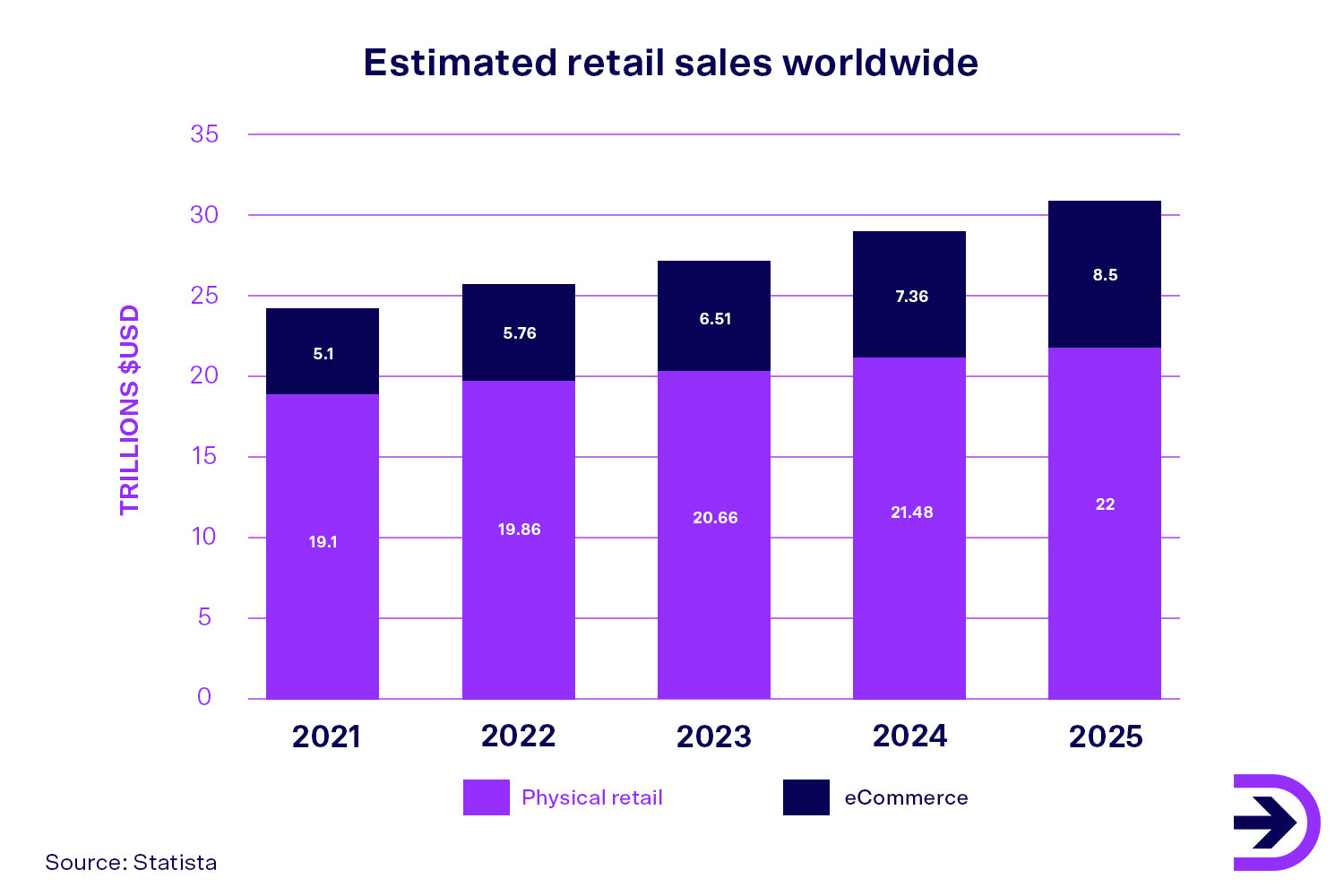
With ecommerce sales being set to reach $6.86 trillion in 2025, there truly has never been a better time to start your own online business. However, with all the information around this booming industry, things can seem complicated for someone looking to start a business. So, how do you decide which strategy will work best for you in 2025? This blog will detail some of the key differences between the two, as well as outline the pros and cons to help you decide what will work best for you and your future business goals.
What is dropshipping?
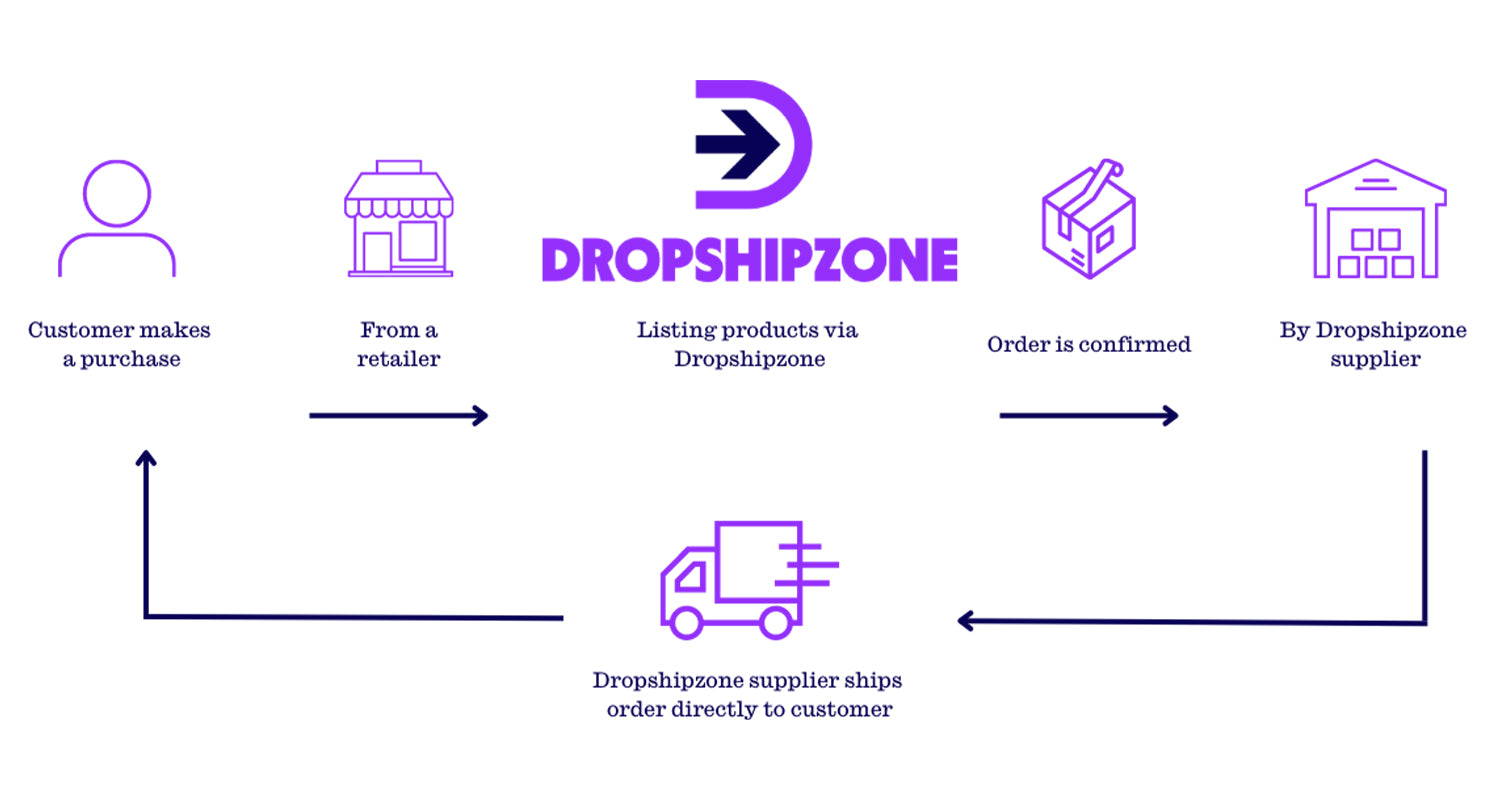
Dropshipping is an ecommerce fulfilment method where the retailer places an order with a supplier once a customer has made a purchase. The dropshipping supplier then sends the items directly to the customer, earning the retailer a profit margin. Because the stock is sent directly from the supplier to the end customer, the retailer doesn't have to worry about picking, packing or shipping physical inventory.
The dropshipping model in 2025
Dropshipping may look slightly different this year when it comes to the changing online market. Retailers are more likely to succeed by doing constant research on the market changes in order to discover what customers want and how they are shopping.
More customers will be using their phones to shop in 2025, and social media will play a key role in online shopping. With social commerce on the rise, it will be more important than ever to build a brand that people are drawn to while scrolling.
Social commerce is set to grow to $1.2 trillion by 2025, and with 5 billion global social media users, the benefits of having an omnichannel business in 2025 are huge. Many dropshipping programs offer apps and websites to seamlessly integrate your store onto your social media platforms, making it easy to stay on top of the changing market.
Along with the rise of social commerce, customers will also be looking for more omnichannel strategies when shopping online.
Omnichannel is a sales approach that aims to give customers multiple channels to shop on. These can include shopping from a mobile or desktop, using social media, or going in store. Studies have shown that companies retain 89 per cent of customers with omnichannel engagement strategies compared to companies with weaker omnichannel strategies who only retain 33 per cent of their customers.
Because Australians are spending so much time on their phones and social media, having an omnichannel approach to your marketing will be paramount in ensuring the success of your business.
Pros and cons of dropshipping
As far as deciding which marketplace strategy will work best for you, outlining the pros and cons of each should help you along on your way.
Pros of dropshipping
Low cost
One of the biggest selling points for retailers using dropshipping is the low startup costs. Most dropshipping companies offer free sign up options and include no ongoing membership fees.
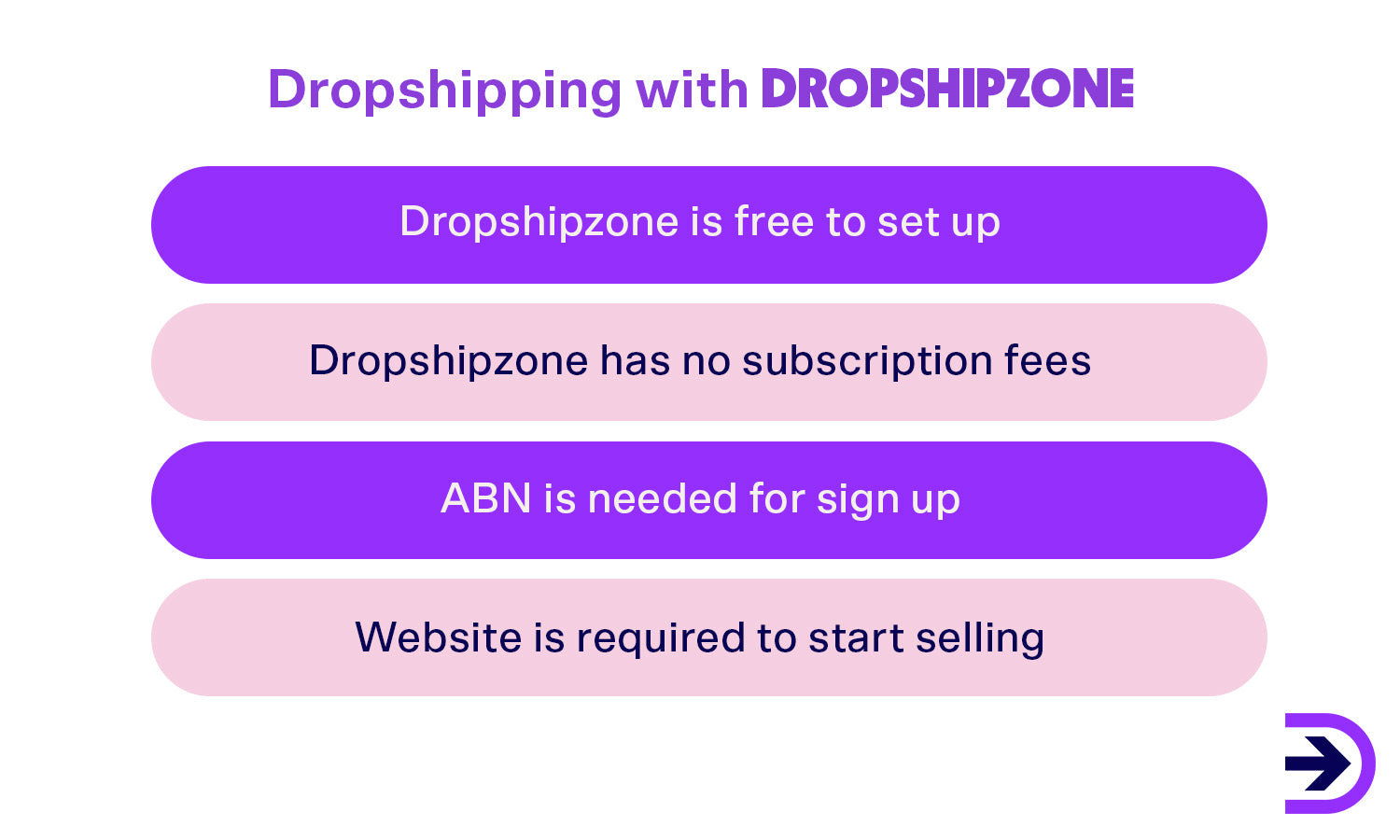
Dropshipzone is free to set up, has no subscription fees, and doesn’t require minimum order quantities. All you need to sign up is an ABN and a website for your business. From there, you can create your account and wait for confirmation. You can then download various product SKUs and choose from hundreds of trusted retailers to start selling.
Beginner friendly
Dropshipping is a great option for retailers looking for an easy way to set up their online shop. The majority of ecommerce platforms are straightforward and offer guides to help you with the setup process. This takes the stress out of starting a business from scratch, and the process can instead become an exciting way to develop your brand.
Most dropshipping companies will also offer consultants who can assist you with any questions you might have, so you don’t need to worry if you’ve never built a website before. These consultants can also help with customer concerns, how to generate higher profits, how to sync to your shopify store and many more!
Full control over branding
Deciding what type of brand you want to create is important to ensure your success, and it is essential that your branding stands out from the crowd and makes a lasting impression due to the saturation of the market in 2025.
With dropshipping, you can think about what strategies work best for you as a shopper and apply them to your own business. The sky is the limit when it comes to this side of creating an online store if you choose to go with the dropshipping method.
Time to invest in your business
Because of the easy sign up process and the fact that you don’t have to worry about inventory, retailers have plenty of time to invest in and develop their business, giving them the best opportunity to create a successful online store.
Investing in exceptional customer service, tech and marketing teams may be something you become interested in as your business grows, and with dropshipping you will have the time to do so. There is more of an opportunity to have a larger team with dropshipping if you find that your customer base is growing, and having a team of people in charge of different departments will help you to continue your business growth in the future as opposed to having you as the sole employee.
You can work from anywhere
Work flexibility is becoming more important to Australians in 2025. According to a survey by Small Business Loans Australia, 48 per cent of respondents were considering a small business/side hustle to find a better work-life balance.

With dropshipping, you can work from anywhere in the world, as long as you’ve got an internet connection. This is appealing to the growing community of people looking to increase their work-life balance.
Cons of dropshipping
Competitive market
Because of the low startup costs, dropshipping is quickly becoming one of the most popular fulfilment methods, reaching an estimated market value of $351.8 billion in 2024. The amount of competitors in the market will continue to increase as this popularity grows and more people join the ecommerce space. So, while it is a great time to join the market, the importance of creating a niche business and designing a brand that stands out from the crowd will be important to create success.
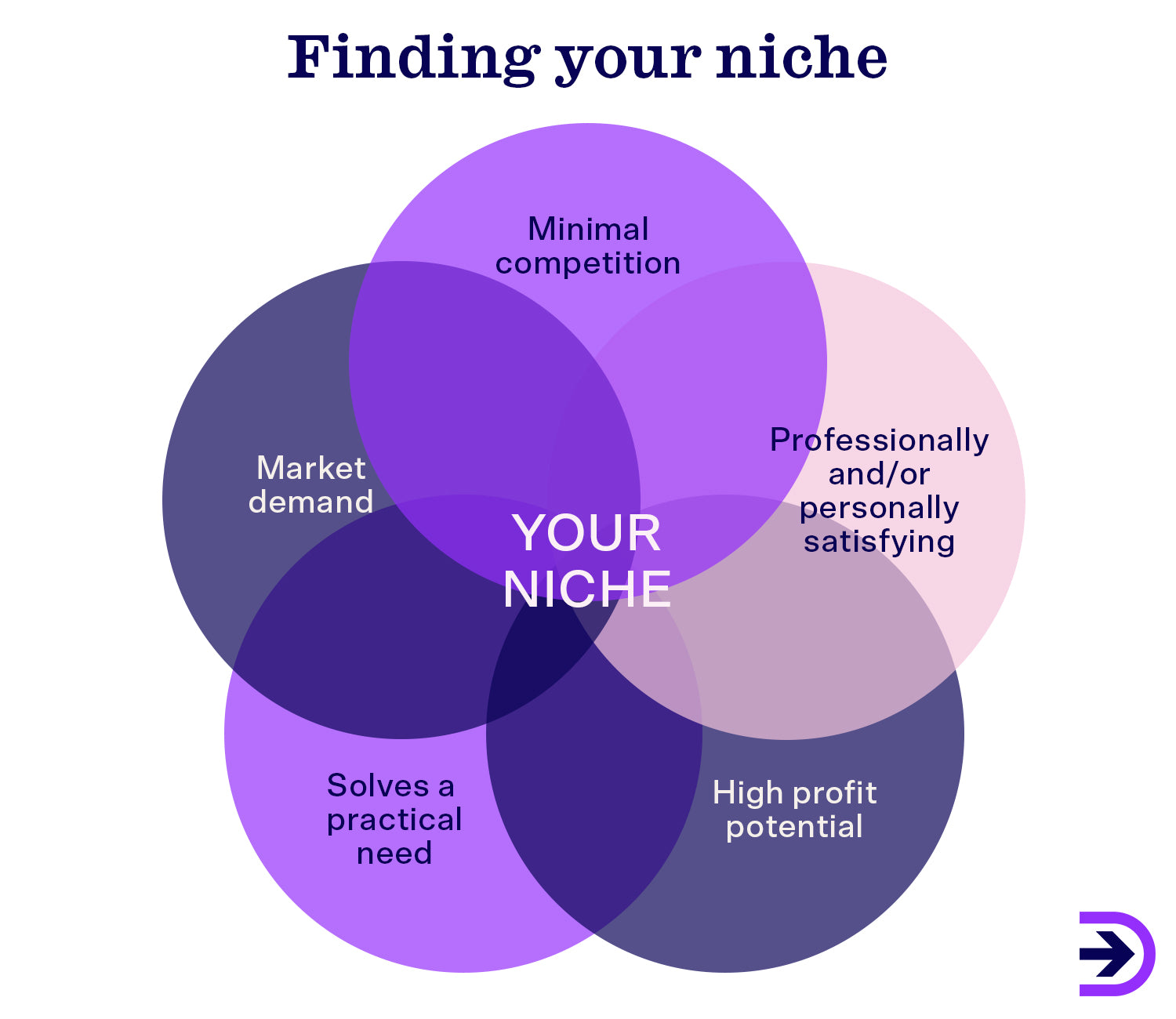
Lack of control over products
Dropshipping takes care of anything to do with inventory, which is great to avoid high risk situations, but it also means you don’t get to know your product as well as you might like. There isn’t the opportunity to partake in some of the higher cost activities of starting an online store like developing products from scratch and stocking a warehouse.
This means that any concerns customers have might prove difficult to solve if they have issues with products. Investing in great customer service strategies from the get-go to avoid large amounts of negative reviews or feedback will be a great strategy to overcome this.
Shipping delays
Shipping times can be unpredictable with dropshipping, and if your chosen suppliers don’t have an efficient system to deal with delays it could result in unhappy customers. It is best to talk to your supplier early and regularly about shipping times in order to be as transparent as possible with customers and avoid false advertising.
Choosing a dropship supplier that operates in your region will be the best option to avoid shipping delays. Dropshipzone features many suppliers dropshipping from Australia, making it a great option for retailers looking to cut shipping times and costs down.
What is Amazon FBA?
Fulfilment by Amazon (FBA) is an online marketplace where retailers can send the items they want to sell to an Amazon fulfilment centre where they can be approved for selling. Retailers can then list their products alongside other stores on the website, whilst all the shipping, handling and returns is handled by Amazon's warehouse.
The Amazon FBA business model in 2025
Due to Amazon’s popularity, there will be a need to create competitive prices in 2025 with a shift in shopping behaviours due to a changing economy and rising prices.

Australians in 2025 are tightening their purses, with 8 in 10 worried about the rising cost of living and 1 in 2 stressed about the affordability of daily essentials. However, consumer confidence has increased compared to the previous year. 76 per cent of Australians are ready to spend their cash - so long as it's during a sales event.
Customers will be looking for an easy and effective way to compare prices and choose the best deal for them, so a solution like Amazon FBA will seem favourable to retailers. With this in mind, it will be important for retailers to set competitive prices against others on the platform due to the already saturated market.
Pros and cons of Amazon FBA
Now that we have outlined some of the pros and cons of dropshipping, here are some for Amazon FBA.
Pros of Amazon FBA
Time saving
Similar to dropshipping, Amazon FBA also offers a quick set up process. You can set it up in as little as four steps. First, you set up your selling account with Amazon, then you can create product listings. From there you can prepare and send your products to an Amazon fulfilment centre, and you are well on your way to having a successful online store.
This gives retailers the time to invest in the tools like social media marketing strategies and omnichannel options, which will be important factors to ensure the success of your ecommerce store in 2024. This is also great for people looking to earn money on the side instead of diving into creating a business from scratch.
Larger customer base
As of October 2024, more than 315 million people shop on Amazon. Because of this popularity, retailers will have a larger customer base, and product listings will be seen by a wider range of customers per day.

With Amazon FBA, you will have access to hundreds of millions of customers, and are more likely to see immediate success on the platform by quickly accumulating customer ratings.
Ability to succeed
Due to the amount of people shopping on Amazon, retailers are also more likely to see better profit turnover because they can sell their items for higher prices. However, in order to succeed, you will need to set competitive prices as many customers will be using Amazon to find the lowest prices and will likely choose either highly rated products or the cheapest option.
Amazon FBA also allows you to tailor your product descriptions and create specific selling points for customers which will be an important factor to ensure your success.
24/7 customer support
Amazon FBA offers 24/7 customer support in their program, meaning you don’t have to wait by your phone day and night to ensure you are keeping your customers happy. You can sleep easy knowing a team of professionals are working with your consumers and answering any concerns they may have.
This function will prove to be important for retailers looking to create outstanding customer loyalty online. Having a successful customer service function will help to increase your returning customer rate and keep more people shopping online in 2025.
Returns policy
Amazon FBA also take care of any returns and replacements, which is all included in membership fees. They offer free 30-day returns and refunds for all products, so your customers can be completely happy with their shopping experience.
As an FBA seller, you can choose whether you allow some items to be returnless refunds, in which case the customer doesn’t have to send the item back to a fulfilment centre. This is a great way to control your returns as much as possible by saving money on return shipping and increasing customer satisfaction.
Cons of Amazon FBA
Fees
Amazon FBA requires an initial sign up fee as well as ongoing membership fees. This can prove costly for retailers finding they aren’t moving as much stock as initially expected, as Amazon also have an aged inventory surcharge for any long-term storage of products sitting in their warehouses.

Currently, it is $49.95 to sign up for Amazon FBA, and that price is charged on a monthly basis as long as you are selling on the website. There are also additional selling fees that depend on the amount of products you have stored in the warehouse, as well as what types of products you are selling.
To store your items, the fees are based on the size and weight of the product, including whether it is peak season or not. If you have items in an Amazon warehouse at the end of the month, you will get charged a storage fee. The aged inventory surcharge will be charged if any items are in the warehouse for longer than 181 days.
Like dropshipping, Amazon takes a percentage of commission for each product sold on the website after the sale is made, and these percentages vary depending on your selling categories.
It is important to note that Amazon’s prices will increase based on busy seasons throughout the year, so make sure you are aware of the costs before choosing this fulfilment method.
Lack of creativity
Since selling your products with Amazon FBA means placing them on their website, you don’t have the option to sell from your own website as you would with dropshipping. There aren’t any personalised design features to choose from, and this can make it hard to attract shoppers and build your brand in a personal way.
This factor is great for people wanting a fast set up, but if you want to create a specific voice for your brand, Amazon FBA doesn’t have many options to stand out other than writing product descriptions and adding images to your selling page.
Minimal contact with customers
Because Amazon takes care of any customer service processes, the retailer can be quite disconnected from the customer.
You may find you are unable to create relationships with customers, which is an important aspect of online businesses. Without directly knowing about your customer’s wants and needs, it will be difficult to create successful marketing strategies to cater to them.
Possibility of higher returns
Lastly, Amazon’s returns policy has been made extremely easy due to the rise of online shopping in the past years and the need to return items online.Studies show that over 20 per cent of items are returned online, with fashion items making up 56 per cent of all returns.
Whilst a lenient returns policy can be seen as a positive for some retailers, the likelihood of returns is higher than in marketplaces with a more complicated returns and replacements policy.
Simialarities between dropshipping and Amazon FBA
Both dropshipping and Amazon FBA offer different setups and storage methods, but the two marketplace strategies also have some similarities that may help you choose which approach to go with.
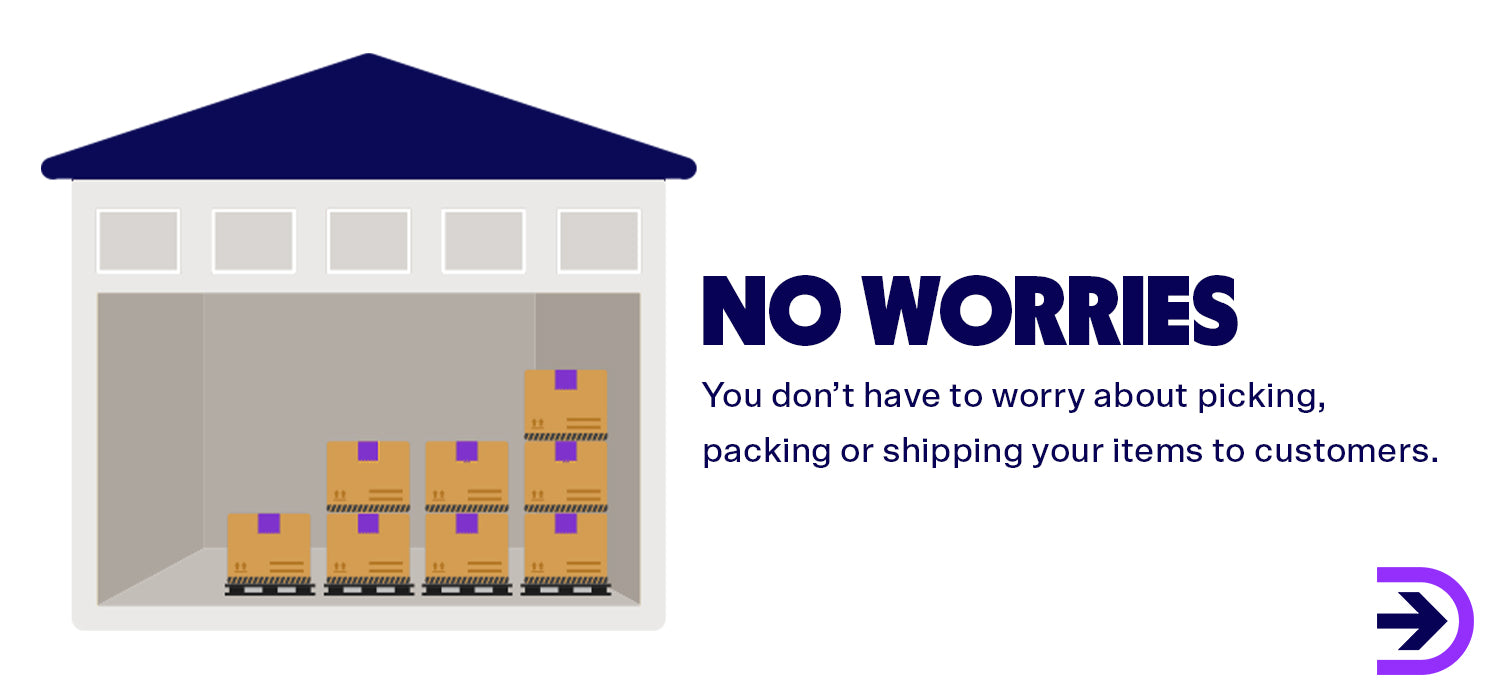
The main similarity is that once your store is set up, you don’t have to worry about picking, packing or shipping your items to customers. You also don’t need to worry about finding a warehouse as both dropshipping and Amazon FBA offer their own warehouses to store your product. With the ability to rent and keep warehouses becoming more difficult in 2025, especially for new retailers, the time to use alternate fulfilment strategies is well and truly here.
Both dropshipping and Amazon FBA offer flexibility with working capabilities. The beauty of online retail is that you don’t have to worry about running a physical store and employing staff or filling racks. Want to take a holiday during the year? As long as you’ve got a stable internet connection, you can work from anywhere in the world.
Dropshipping and Amazon FBA are quick and easy to set up. Each option offers step-by-step instructions on how to set up your store and have experts available to answer any questions you may have. The ability to succeed is increased because you can save valuable time that can be used to develop excellent marketing strategies and get to know your customers.
How to determine which is right for your ecommerce business
Still unsure of which option will be better for your business in 2025?
With Amazon FBA, the risks are slightly higher when it comes to investing. You will have to pay the initial startup fee, as well as the ongoing membership fees. You don’t have the freedom to see how your items sell and must stock the warehouse yourself. There are also the long-term storage fees to think about, and if any product sits in an Amazon warehouse for longer than 181 days, you will be charged. If you already have an online business and are looking to expand your customer base, using Amazon FBA could be a great way to do this. However, if you’re wanting to build your brand in a creative way, this method won’t really allow for that.
When it comes to keeping inventory, dropshipping removes any issues you may have with seasonality and predicting the shopping trends throughout the year as you don’t have to keep stock. You can get to know your customers and discover what products they like and don’t like, without having to pay for warehouse space or worry that things won’t get sold. Dropshipping also gives you the creative freedom to build your business from the ground up, so if you’re motivated and looking to succeed, this method will work better for you.
If you’re looking for a way to sell to a larger customer base from an already established store, or you’re wanting to start a business on the side without building a website, Amazon FBA is likely to suit you. If you’re looking for a lower-risk strategy to start your online business and more creative freedom and control, then dropshipping is the better option.
Summary
Selecting the fulfilment method that is right for you will be vital in ensuring your success, and the choice depends on what your goals are for your business. There are multiple factors to keep in mind, such as how much money you want to spend, the risks you are willing to take, and the overall nature of your business.

We have tried to help you decide which strategy will work best for you by outlining the following:
Dropshipping will work best for you if:
-
You are start selling online through an e commerce business.
-
You’re looking for creative freedom.
-
You want a low risk strategy with low costs.
-
You don’t want to worry about physical inventory.
-
You don’t want to worry about picking, packing or shipping.
-
You want work flexibility.
-
You want time to build your business.
-
You want future opportunities to build a team.
Amazon FBA will work best for you if:
-
You’re looking to save time.
-
You want to sell alongside other retailers.
-
You don’t want to deal with customer service or returns.
-
You don’t want to worry about picking and packing.
-
You’re willing to pay ongoing fees.
-
You want to sell to a wider range of customers.
-
You want a small marketplace strategy you can easily do on the side.
If you feel like dropshipping will work better for you, Dropshipzone is the way to go. As Australia’s leading B2B2C marketplace, Dropshipzone offers low startup costs and connects you with hundreds of suppliers.
You can sign up easily today, and once approved, you are well on your way to having a successful online business in 2025.
FAQ
Is Amazon FBA the same as dropshipping?
No, while they are both marketplace strategies, they are not the same. The main difference is the method of stock inventory. With dropshipping, you only have to order a product once a customer places an order, whereas with Amazon FBA you must prepare and send your products to an Amazon warehouse in order to sell.
Is dropshipping and Amazon FBA worth it in 2025?
The short answer is yes, they will be. With ecommerce sales being set to reach $6.86 trillion in 2025, and the dropshipping industry reaching an estimated market value of $351.8 billion in 2024, there has never been a better time to start an online business.
How much does Amazon FBA cost?
At this time, Amazon FBA costs approximately $49.95 per month + additional selling fees.
Can you dropship on Amazon FBA?
Amazon FBA is an alternative to dropshipping, so you will always supply the products to Amazon warehouses in order to sell. If you aren’t using FBA, you can dropship from Amazon as long as you closely follow their dropshipping policy.


.png)

.png)